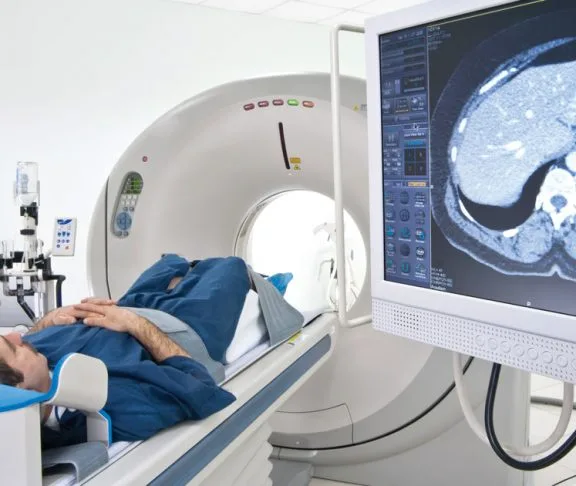Imagine if your doctor had a magical crystal ball that could predict the best treatments for you. That’s kind of what data-driven healthcare is all about. It’s not just a catchy phrase – it’s a massive leap forward in how we make decisions about health. Instead of relying on gut feelings, it’s like upgrading our healthcare system with to a super-smart level, using heaps of information to improve how we treat patients, run hospitals, and plan for the future. A number of data science institutes and university healthcare departments are working day and night to find new ways to make our healthcare system smarter and more effective.
What is Data-Driven Decision-Making in Healthcare?
Data-driven decision-making in healthcare is like having a trustworthy guidebook that assists healthcare professionals in making informed choices based on analyzed data. Instead of relying solely on intuition or past experiences, this approach involves extracting insights from vast amounts of healthcare data to optimize patient care, improve operational efficiency, and enhance overall health outcomes.

Examples:
- Treatment Personalization:
- Imagine a patient diagnosed with a complex condition. Data-driven healthcare allows to analyze the patient’s medical history, genetic makeup, and treatment responses of similar cases. By considering this wealth of information, medicinal data science helps doctors to personalize treatment plans, ensuring they are tailored to the individual characteristics and needs of the patient.
- Resource Allocation:
- Hospitals deal with a constant flow of patients and limited resources. Through data-driven healthcare, hospital administrators can analyze patient admission patterns, average length of stay, and peak admission times. This information helps optimize resource allocation, ensuring that the right number of staff, beds, and equipment are available when and where they are needed most.
- Predictive Analytics for Disease Outbreaks:
- Data-driven healthcare is crucial in predicting and managing disease outbreaks. By analyzing data from various sources, including patient records, environmental factors, and demographic information, healthcare authorities can predict the spread of infectious diseases. For instance, during a flu season, predictive analytics can help healthcare systems prepare for an influx of patients and allocate resources accordingly.
- Chronic Disease Management:
- For patients with chronic conditions like diabetes, data-driven decision-making involves continuous monitoring and analysis of patient-generated data, such as blood glucose levels and lifestyle habits. Healthcare providers can use this information to adjust treatment plans, offer timely interventions, and provide personalized guidance to patients, improving long-term health outcomes.
- Operational Efficiency Improvement:
- Hospital operations are being made efficient by emerging field of clinical data science. For example, analyzing data on patient flow, admission and discharge times, and staff schedules can lead to improvements in the workflow. This ensures that patients receive timely care, reducing waiting times and enhancing the overall experience.
- Healthcare Quality Metrics:
- Data-driven decision-making is integral in measuring and improving healthcare quality. Healthcare facilities regularly collect data on various quality metrics, such as patient satisfaction, readmission rates, and adherence to clinical guidelines. By analyzing these metrics, healthcare administrators can identify areas for improvement, implement targeted interventions, and ultimately enhance the quality of care provided.
- Telehealth Implementation:
- The rise of telehealth is a result of data-driven healthcare. Analyzing data on patient preferences, accessibility challenges, and the effectiveness of remote healthcare delivery helps organizations make informed decisions about implementing and optimizing telehealth services. This ensures that patients can access healthcare conveniently, especially in remote or underserved areas.
What are Real World Examples of Data-Driven Healthcare?
- IBM Watson for Oncology: Using AI to analyze vast amounts of medical literature and provide personalized cancer treatment recommendations.
- Google’s DeepMind Health: Exploring AI applications for analyzing patient data to improve healthcare outcomes.
- Fitbit and Apple Health: Leveraging wearables to collect and analyze patient-generated health data for preventive care.

4. Geisinger Health System’s ProvenCare: Implementing data-driven protocols to standardize and improve healthcare procedures.
5. Cleveland Clinic’s Predictive Analytics for Patient Flow: Using predictive models to optimize patient admission and discharge processes.
What are Recent Innovations in Data-Driven Healthcare?
In ever growing world of biodata, data-driven healthcare has witnessed a number of innovations which are doing wonders on individual and society level. Few of them are mentioned here:
- Artificial Intelligence (AI) in Diagnostics: AI algorithms analyzing medical images for faster and more accurate diagnostics.

2. Blockchain for Data Security: Utilizing blockchain to ensure secure and transparent healthcare data management.
3. Genomic Data Analysis: Advancements in decoding and analyzing genomic data for personalized medicine.
What Types of Data are used in Data-Driven Healthcare?
There are different kinds of data in healthcare, which are collected to make data-driven healthcare efficient. These data types are:
- Clinical Data: Patient records, medical histories, and treatment plans. Know more about Clinical Data Science and 8 Essential Skills to become Top-Notch Clinical Data Analyst
- Operational Data: Information related to hospital administration and logistics.
- Financial Data: Billing, insurance claims, and financial transactions.
- Patient-Generated Data: Data from wearables, apps, and devices that monitor health.
- Research Data: Information gathered from medical studies and trials.
What are the types of Data Analysis Methods in Healthcare?
Varied types of data analysis methods are perform in healthcare according to data in hand and output expectations. Some of these methods are:
- Descriptive Analytics: Examining historical data to understand past trends and patterns.
- Predictive Analytics: Forecasting future outcomes based on current and historical data.
- Prescriptive Analytics: Recommending actions to optimize outcomes based on predictive models.
- Diagnostic Analytics: Identifying the root causes of issues or challenges through data analysis.
- Text and Sentiment Analysis: Extracting insights from unstructured text data, such as patient reviews and medical literature.
What are the Three Vs in Data-Driven Healthcare?
Any field, no matter how much evolved, never comes without its challenges. So is true for data-driven healthcare. The challenges that are faced by it are often termed as “Three Vs”, which are:
- Volume: The sheer amount of healthcare data generated daily, including patient records, test results, and diagnostic images.
- Velocity: The speed at which data is generated, processed, and utilized in real-time healthcare scenarios.
- Variety: The diverse types of data, ranging from structured (patient records) to unstructured (social media posts about health).
How are the Challenges of Three Vs (Volume, Velocity, Variety) being Addressed in Data-Driven Healthcare?
Addressing the Three Vs—Volume, Velocity, and Variety—in healthcare is crucial for effectively managing and utilizing the vast amounts of data generated within the healthcare ecosystem. Let’s explore how these challenges are being tackled:
1. Volume: Dealing with the Data Deluge
The sheer volume of healthcare data, including patient records, diagnostic images, and research findings, can be overwhelming. Healthcare organizations are addressing this challenge through the implementation of robust data storage solutions and advanced database management systems. Cloud-based storage allows for scalable and cost-effective solutions, enabling healthcare providers to store and retrieve massive volumes of data securely. Additionally, advancements in data compression techniques and data warehousing technologies contribute to more efficient handling of large datasets, ensuring that valuable information is readily accessible without overwhelming storage capacities.
2. Velocity: Real-Time Processing for Timely Insights
Healthcare data is generated at a rapid pace, especially in emergency situations where quick decisions are crucial. To address the velocity of healthcare data, real-time processing solutions and analytics platforms have become essential. Advanced analytics tools enable healthcare professionals to extract actionable insights promptly. For instance, in emergency rooms, real-time data analytics can help prioritize and streamline patient care, ensuring that critical information is available instantly. The implementation of technologies like edge computing further accelerates data processing at the source, reducing latency and providing timely responses to evolving healthcare scenarios.
3. Variety: Integrating Diverse Data Types
Healthcare data comes in diverse formats, including structured data like electronic health records (EHRs) and unstructured data like physician notes and images. The challenge lies in integrating and making sense of this variety of data. Interoperability standards, such as Fast Healthcare Interoperability Resources (FHIR), facilitate the seamless exchange of structured data among different healthcare systems. Natural language processing (NLP) and machine learning algorithms are being deployed to extract valuable insights from unstructured data, enabling healthcare professionals to unlock the wealth of information embedded in free-text notes and images. By harmonizing these varied data types, a comprehensive view of patient health and treatment outcomes can be achieved.
Future Considerations: Veracity and Value
While the traditional Three Vs (Volume, Velocity, and Variety) are essential considerations in managing healthcare data, the evolving landscape introduces additional dimensions: veracity (data accuracy and reliability) and value (extracting meaningful insights). Ensuring the veracity of healthcare data involves implementing robust data governance frameworks and quality assurance processes. Moreover, the focus is shifting towards deriving meaningful value from data rather than just accumulating it. Artificial intelligence (AI) and machine learning applications are increasingly utilized to identify patterns, predict outcomes, and provide actionable insights, thereby enhancing the value derived from healthcare data.
Conclusion
In conclusion, addressing the Three Vs in healthcare involves a multi-faceted approach that combines advanced technologies, data management strategies, and evolving standards. As healthcare continues to embrace digital transformation, the industry’s ability to effectively handle the volume, velocity, and variety of data will play a pivotal role in shaping more efficient, patient-centric, and data-driven healthcare systems.



